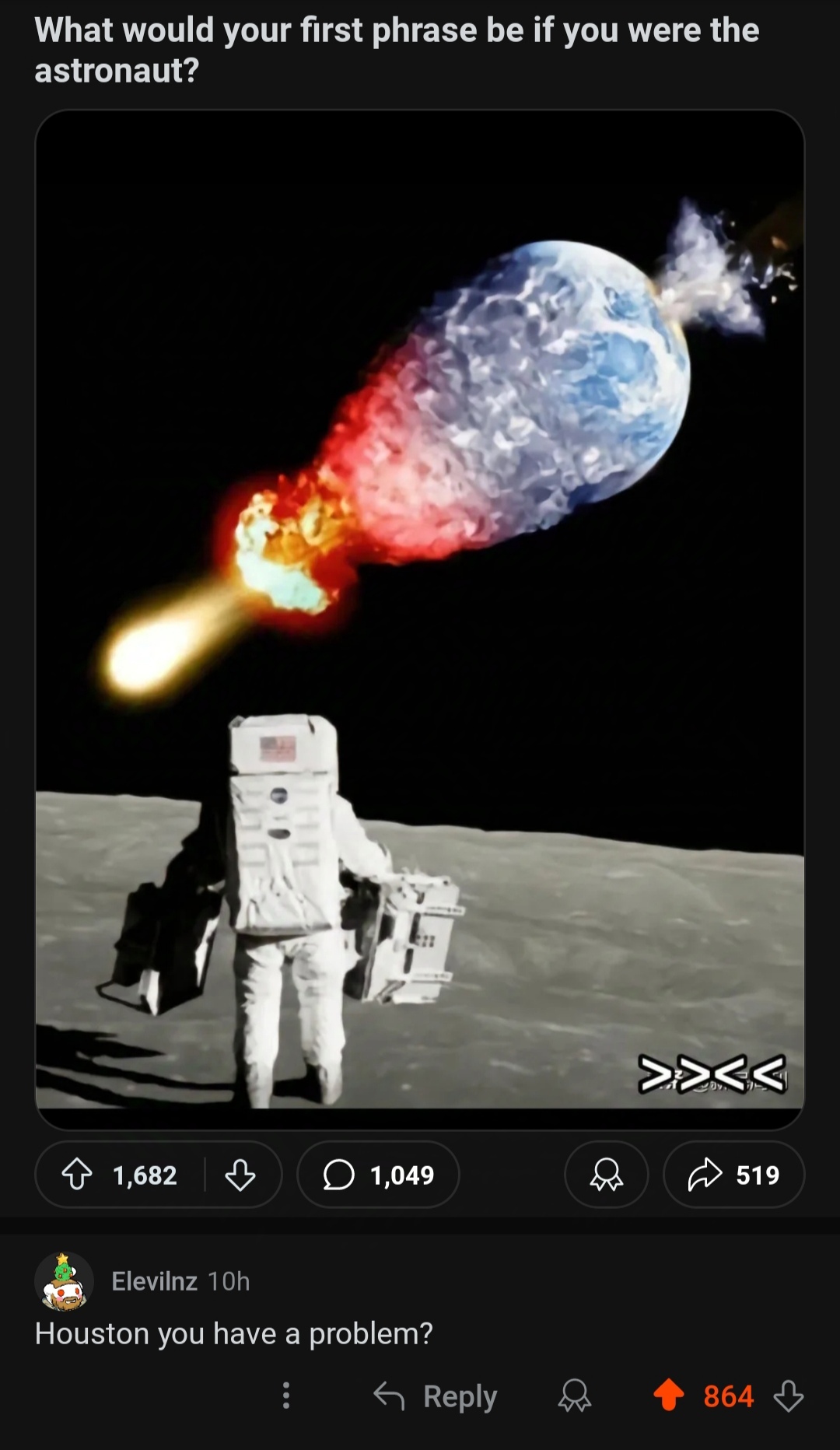this post was submitted on 06 Oct 2024
314 points (93.6% liked)
Funny
6996 readers
267 users here now
General rules:
- Be kind.
- All posts must make an attempt to be funny.
- Obey the general sh.itjust.works instance rules.
- No politics or political figures. There are plenty of other politics communities to choose from.
- Don't post anything grotesque or potentially illegal. Examples include pornography, gore, animal cruelty, inappropriate jokes involving kids, etc.
Exceptions may be made at the discretion of the mods.
founded 2 years ago
MODERATORS
you are viewing a single comment's thread
view the rest of the comments
view the rest of the comments

Now I'm not some fancy science-man, but I do reckon that an impact of that magnitude would propel massive chunks of Earth debris in every direction at incredible speeds. Odds seem fairly well even that you'd get your own little impact death pretty well soon after.
If you're lucky.
eh...given the distance and the weird orbits it's gonna take for the debris to actually hit...a few days probably?
couple of days for the bombardment to hit the surface, and then it's a game of statistics how long it takes for a direct hit or secondary ejecta to hit your landing site/base.
probably a better idea to take all the fun pills all at once than to wait for that...
actually, you can probably simulate this rather well in universe sandbox! ;)
Yeah no that thing impacted with a lot of speed. Like >1% of the speed of light to go through the entire earth like this. Consequently, the debris is moving very fast as well.
the ejecta themselves would definitely pose a danger, but air supply running out would probably kill you before they impact the moon.
the distance between earth and moon is already significant, the angle shown in the picture is pointing away from the moon, most of the mass would stay in the same place due to gravity pulling everything back together, the orbital path the debris has to take in order to impact is gonna take multiple orbits for most of the debris, and only a fraction will impact on the site pictured.
still dangerous, but not as immediately as one would think.
the only significant projectiles would be a small portion of the debris just off-center from the exit crater (the sort of "cork" shooting out):
so it would only be a fraction of a fraction of a fraction that even has a chance of coming down onto the astronaut pictured, but that's still gonna be enough to be dangerous.
it's also gonna take a couple days to arrive most likely; the debris is not gonna come straight at the moon, because by the time it makes it there, the moon would have moved and it would miss.
a vanishingly small fraction will move fast enough to impact on a (mostly) direct trajectory. those impactors will still take at least a couple hours, even at close to relativistic speeds, and it'll consist almost entirely of dust and tiny micro meteorites. the fast movers have to be tiny, because anything larger would be torn apart by the acceleration.
(...actually I'm not sure any material apart from more exotic states of matter like nuclear pasta (which doesn't exist on earth. yes, that's an actual technical term) could even theoretically be accelerated to a significant fraction of c in the presumably less than a few seconds pictured above without being torn apart at the atomic level...and dense material experiences greater gravitational pull, so it would have a harder time reaching the moon...)
in order to impact, the vast majority of the debris would need to move on parabolic trajectories, and most of those will take multiple orbits in order to impact.
during those orbits, most debris will be pulled back onto earth, or in orbit around earth, since it's gravitational pull is so much greater than the moons. add another fraction to the ones above ;)
we're still missing a bunch of considerations, but I'm gonna stop here.
point is: as pictured above (apart from the impactor being impossibly dense) the danger to someone on the moon is mostly manageable and secondary to the danger of supplies running out.